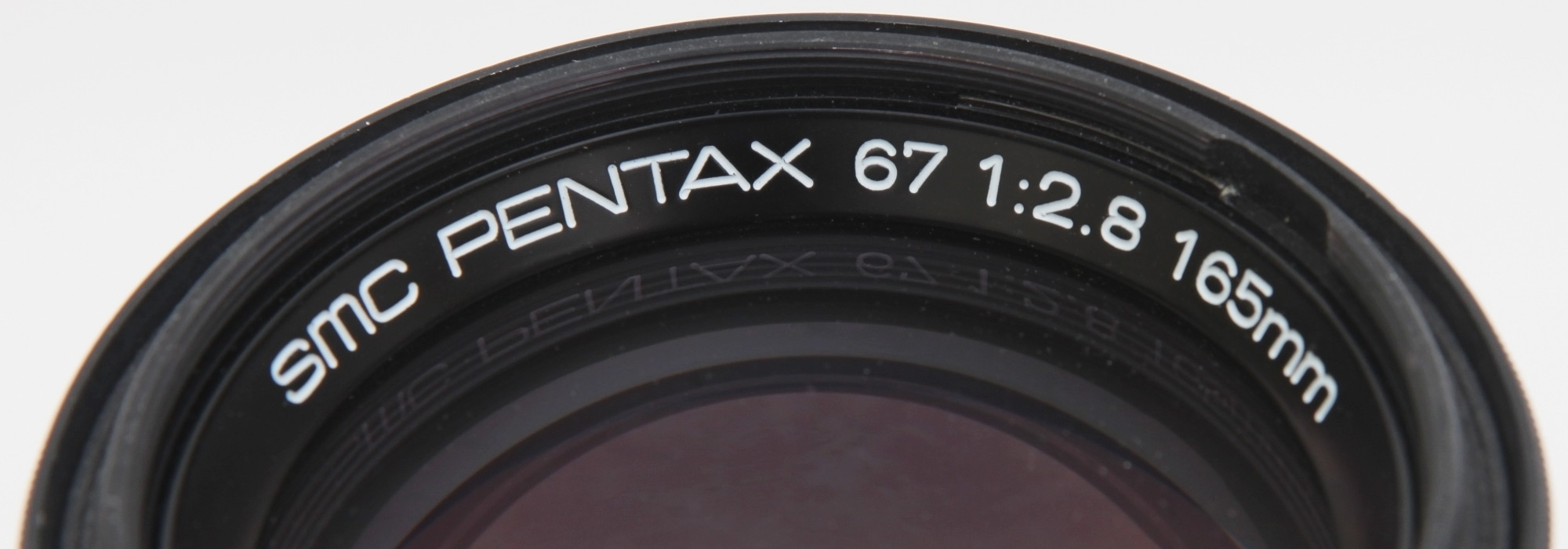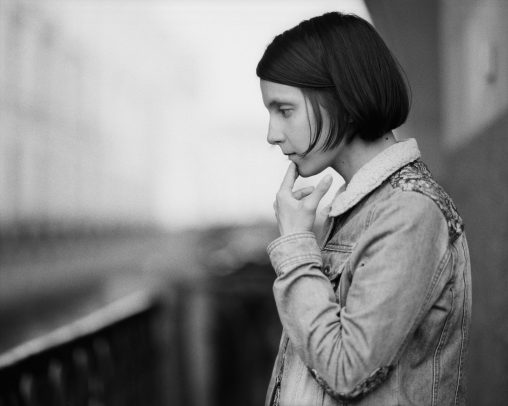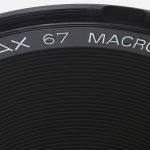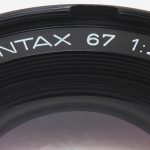Well, when you opt for a certain camera system you also choose the entire range of lenses that go with it. And as for me, Pentax 67 165mm F2.8 is one of the lenses which may determine the choice of a medium format camera system. Also, do not confuse it with a similar lens — 165mm F4 LS. This lens has a leaf shutter and different optical formula.
I’ve tried many medium format cameras until I finally decided to settle on Pentax 67. Even before coming to this decision and buying this camera with the 90mm F2.8 standard lens, I was certain that I’d have this lens in my system and that it was just a matter of time.
This lens is a great addition to the standard 90mm F2.8 or 105mm F2.4 lenses, because it complements them really well. It is a fast aperture lens which is very uncommon for such a lens type in the entire medium format.
Size and weight
Although the size of this lens resembles that of 135mm F4 Macro, being just 4mm longer, it is also 200g heavier, with a total weight of 840g, which is not surprising, taking into account its focal length and lens speed. In practice, it is quite a lot, making this lens not the best option for handheld shots, especially when it comes to vertical framing. Therefore, you are unlikely to carry it in a backpack as an additional interchangeable lens “just in case”.
It is also important to remember that a more long-focus and heavy lens requires faster shutter speeds. The minimum shutter speed at which you can do handheld shots is 1/250, ideally combining it with mirror lockup. Or try to shoot at 1/500, which is often quite possible at the F2.8.
Image quality
It was created primarily as a portrait lens, so one should not place any special demands on it in terms of sharpness. But it is, above all, a modern lens, that is its sharpness is similar to that you’d expect from any modern lens and is comparable to the 90mm F2.8.
Close focusing
At a minimum focusing distance of 1.6m, it ensures the same magnification ratio as the 105mm F2.4 at 1.0m distance. They are somewhat similar in this regard. In such a case, the lens speed fall-off is about 0.36EV.
For a close-up portrait the extension tube #1 is required, which together with the focusing at a minimum distance results in exposure factor ×1.5.
So it is desirable to adjust the exposure by +0.5EV. I always do this while shooting at a minimum distance, even when I do not use any extension tubes.
Field of view
The 165mm focal length of the lens matches that of the classic portrait 85mm lens for 35mm cameras with the field of view 30°. For my photography style, this lens happened to be overly long focus, as I prefer to keep a closer distance to the model. So, it requires the use of more short-focus lenses.
I find 120-140mm more convenient in such cases. In practice, I’d rather use 135mm F4 Macro. For soft portraits, I prefer antique brass Petzval 120mm F2.9, which I myself adapted for Pentax 67 body.
Aperture
The aperture is one of the distinguishing features of this lens, as nothing similar to this can be found in any other medium format lenses. In fact, lenses with automatic aperture rarely have more than 8 blades due to the mechanical complexity of their design.
But the primary purpose of this lens is to shoot portraits, which often requires a softer blurring of the background. So, Asahi equipped the lens with 10 blade aperture! It gives a well-curved aperture opening and a beautiful blurring of “dot lights” in the background when the aperture is stopped down.
Filters
It has a 67mm filter thread which works fine with both screw-in and special bayonet mount filters.
Hood
The lens has a built-in sliding hood. But in certain situations an extra hood may still be required. I occasionally use Mamiya G2 bellows hood.
Bokeh effect
This lens has been specially designed to create a beautiful bokeh effect with the help of its fast F2.8 and a 10-blade aperture.
Summary
Unfortunately, this lens with all its unique properties has not become my main tool or primary choice for shooting portraits. Perhaps, one of the main reasons for that was its size and weight, which discouraged me from changing lenses for no serious reason. For a close-up it requires the extension tube #1, so I preferred to use the 135mm F4 Macro instead.
My portrait shooting is usually carried out at short distances, as I am keen to be in direct contact with the person I’m shooting. So, in practice, I often used my favorite 90mm F2.8 lens, and later when I suddenly got hold of the 105mm F2.4 lens, I almost completely switched to it. I came to realize that I favor its bokeh effect more.
The Pentax 67 165mm F2.8 lens happened to be too heavy for trips, as it weighs about 1kg. I always brought it with me in the hope of using it, but, in practice, I tended to shoot with another lens, just occasionally installing the Pentax 67 165mm F2.8, simply out of the desire to justify its presence in the backpack.
Just recently, 10 years after its purchase, I sold it, though not without regret. Maybe, I’ll buy myself old Takumar 6X7 150mm F2.8 as a replacement, but I am not sure if I need it at all, because now I have an old brass Petzval 120mm F2.9 from the unbranded antique magic lantern projector, with which I experiment a lot.
In fact, this lens has been and still remains a touchstone for me, as I’ve said in the beginning of this post. It is an excellent (and maybe unique) fast-speed lens that does not have and will probably never have equivalents in other medium format systems. Perhaps I still get back to it one day. And this very opportunity is very important for me.
Pentax 67 165mm F2.8 Lens data
- Focal length: 165mm
- 35mm equivalent: 85mm
- Aperture: 2.8 ~ 22 (10 blades)
- Close distance: 1.6m
- Magnification: 0.13×
- Picture area: 53×41cm
- Exposure factor: ×1.28 (+0.36EV)
- Effective lens speed: 3.2 ~ 24.9
- Optical formula: 6 elements, 5 groups
- Field of view: 30°/24° (Diagonal/Horizontal)
- Filter: 67mm, screw-in and bayonet
- Hood: Built-in
- Case: S120-150
- Dimensions: 92×99mm
- Weight: 0.84kg
P.S.
Thanks for reading! I would be very grateful if you point out my possible mistakes, add extra information, or just share your experience. Scroll down to the Leave a reply section and share your thoughts about it. Your opinion is important for me. I enjoy answering your questions as the answers may often benefit many other readers and the process of answering allows me to better piece together my existing knowledge and find ideas to improve my articles.


















Steve Rasmussen
This lens uses a Double Gauss design and is one of the longest lenses I have seen to use it. Feel free to use this info in your site.
arrachart
Bonjour,
J’adore vos photos et je reve de pouvoir un jour en faire autant. Je reve aussi du pentax 67. J’hésite entre le 67 et le 67 II, avez vous un conseille à me donner ?
Autres questions : développez vous et scannez vous vous même vos films, sinon par quel labo ? Quel posemetre utilisez vous ?
Merci
Cordialement
Eric
Sasha Krasnov
Hello Eric
Thank you for noticing my work. Sorry, I do not speak French, I will answer in English. Considering your questions… Well, if you want to save hundreds of dollars (or euros), you should by just 6X7/67. You may spent these saved money on lenses. But I recommend to buy boyd with mirror lockup unit (MLU) by manu reasons. The main — these bodies are newer than classic 6X7 w/o MLU. They are usually heavily used. I’ve two bodies, 6X7 and 67 with MLU. As for result — it doesn’t matter which camera you will use. The cost difference may be about 2-3 lenses.
If you can spent more for the camera or a budget doesn’t matter for you — buy Pentax 67II. They are much newer and not so much used as 6X7/67 MLU. Also it uses newer battery type — 2pcs of CR2, that is easier to find in local store. But power supply is not a problem for old cameras too. Another one great feature — AE prism finder. If you need Av exposure mode than you have only one choice. Also, with its right hand grip it is much handier.
Jesse
Hi, thank you for all of your articles about pentax 67. I’m waiting for my pentax 67 body to arrive from Japan. Now all i need to buy is the lens, either 150mm or 165mm, are those basically the same lens ? Also, i hear that the 105mm is one of the lens that’s great for creating the “3d effect”, do you think the 150mm or 165mm will do a better job for that?
Sasha Krasnov
Hi Jesse,
thank you for visiting my website. Yes, in my opinion, the 105mm lens is a must-have lens for shooting people. The “3d effect” is a bokeh. It’s a better noticeable when a subject is in the middle focusing distance. When you shoot landscapes or doing street photography stopping down the lens beyond f8 causes no serious difference between 90mm and 105mm lenses.
The choice between 150mm and 165mm is much harder. These lenses have different optical formulae. The 165mm is a modern lens and on my taste is a too-perfect lens. The 150mm lens is closer to the 105mm lens. I like it a bit more, it’s bokeh is more interesting. In other words, it has a “harder character”.
Jesse
Thank you! I end up buying the 150mm because it’s closer to 105mm hahaha I’m still saving up for that amazing 105mm next 😀
Sasha Krasnov
Good choice! I hope you’ll like it! Have a great shots!
Peter E.
Sasha,
Interesting take on the lens. I’ve built a system around my older 67 using a 35 SMC Super Takumar f4, SMC Pentax 45 f4, Super Takumar 75 f4.5, and 150 2.8. After watching so much YouTube, you get caught up in lens envy sometimes and I thought that my 150 f 2.8 should work very well and no need for the 105. Thoughts?
Peter
Sasha Krasnov
Hi Peter,
I think any of the standard lenses is a must-have lens anyway. As for me, there is a big gap between 75mm and 150mm lenses I think.
Ken Mier
I’ve been building a P67 kit for about a year. I have a 165mm f2.8 on the way from Japan. I also have the 105/2.4, 55-100/f4.5, 200/f4 plus the 1.4 converter. Although I haven’t gotten a lot of use out of the 200/f4 yet, I’m hopeful that the 165 will give me just the right amount of extra reach over the 105.
If I’m walking in the woods with family, my go-to lens is indeed the 105 with the wood carrying handle on the 67. This is a special lens for portraits, as has been stated so many times before, and I’m not expecting it to be replaced by the 165. I’m hopeful I can manage the 165 by hand – can’t be as bad as the heavy 55-100 zoom!
Sasha Krasnov
I switched from 165mm F2.8 to 150mm F2.8 because the 165mm lens gives too modern image look on my taste. Among other things, it’s a bit long for me, I prefer closer shooting. Anyway, 165mm F2.8 is a great lens.
BENEDETTI
Bonjour Sasha,
merci pour le partage d’expérience .
J’ai repris la photographie argentique depuis cinq ans, après avoir déambulé dans le numérique trop longtemps, avec du Leica M6, puis du Rolleiflex.
En vous lisant j’ai fini par succomber aux charmes du P67, et le premier objectif que j’ai acquis fut le 45mm f/4, ( un rendu assez unique ! ) pour les photographies d’automobiles sans recule . En vous lisant l’envie irresistible d’essayer le 165mm est arrivée ! qui dans quelques temps sera complété par un bon 90mm.
Par ailleurs un détail de compréhension persiste chez moi… vous dites que le 165mm a un rendu plus moderne que le 150mm, dois- je comprendre qu’il est plus détaillé plus contrasté, plus “sharp” que le 150mm ???
Encore merci pour vos témoignages, bonne continuation.
Hello Sasha,
thank you for sharing experience.
I resumed film photography for five years, after having wandered in digital for too long, with Leica M6, then Rolleiflex.
While reading you I ended up succumbing to the charms of the P67, and the first lens I acquired was the 45mm f/4, (a rather unique rendering!) For automotive photography without recoiling. Reading you the irresistible desire to try the 165mm has arrived! which in some time will be supplemented by a good 90mm.
In addition, a detail of understanding persists with me … you say that the 165mm has a more modern rendering than the 150mm, should I understand that it is more detailed, more contrasted, more “sharp” than the 150mm ???
Thank you again for your testimonials, good luck.
Sasha Krasnov
Hi Jean-François,
thank you for visiting my website and reading the article!
You made a good choice of lenses, sure! Yes, the 165mm lens is a bit sharper even being wide-open. Also, the 150mm lens produces a noticeable swirly bokeh which 165mm lacks. So, the 165mm is a more general-purpose lens than 150mm. I think you made the right choice for automotive photography.
Just visited your Instagram, you do a great job! What scanner do you use?
Arnold
I recently bought the 165 2.8 for my 645Z system, but I notice a spot of light in the center of the frame when I stop down to f / 8 and above. Looks like internal reflections.
The lens is really like new from Japan, so it will not be the quality. The built-in lens hood didn’t seem to shield enough, so I bought a Mamiya G2 Bellows, which should provide more than adequate shielding, but unfortunately I still see a spot of light when the sun is at 45 degrees to the subject . I don’t see that at f / 2.8 and f / 4.
Could it be that this lens is not suitable for digital due to internal reflections between sensor and rear element?
Sasha Krasnov
Hi Arnold,
I’m sorry for the late reply. Did you solve the problem? It seems that it is a reflection of light from the aperture blades. Normally, it should not be of course. I think it may be multiple light reflections from the sensor to the iris and back from the iris to the sensor. It has a more reflecting surface than film emulsion. But it is only a hypothesis. I cannot provide a solution idea except for blackening the blades with matt paint. But it is too difficult to fix — you will need to disassemble the diaphragm unit at least. Do you able to test other Pentax 67 lenses at the same f-stop on your 645z?
StanislaVS
Несколько слов о личном опыте использования объективов P67 165/2.8 и 165/4LS:
1). Если вы планируете использовать их на современных цифровых камерах, например GFX50sII, где есть пикинг и стаб, что позволяет обеспечить очень точную наводку на резкость, то для портретов лучше 165/2.8, а для пейзажных фото 165/4LS. Оба объектива прекрасны, но 165/2.8 на открытой чуть менее резкий (не критично, но заметно) и обеспечивает лучшее размытие в боке.
2). Если вы планируете использовать их с плёнкой на 6х7, 67 или 67II, то будьте готовы, что с 165/2.8 будет много брака из-за не идеального попадания фокуса. Причина -очень узкая грип. Возможно фокусировочный экран с клиньями на 67II как то улучшает ситуацию, но у меня 67 с микропризмой и добиться 100% попадания фокуса на глаза с 165/2.8 я не могу. С 165/4LS результат более стабилен, грип шире, да и он заметно более резкий, что важно при съёмке на плёнку.
3). Если вы решите поснимать на плёнку с импульсным светом, то 165/4LS безальтернативный вариант. Можно снимать на 1/250 или 1/500, что даст равномерное заполнение кадра без пересветов, в то время как с 165/2.8 при скорости синхронизации 1/30 будет много брака из-за шевеленки и пересвета центра кадра.
Sasha Krasnov
Да для меня вообще 165мм как-то излишне длинноват. Он диктует определенную дистанцию съемки, порой слишком дальнюю, чтобы был контакт между тобой и тем, кого ты снимаешь. На практике мне проще поставить 105мм и все снимать им, меняя масштаб ногами. для крупного плана я гораздо охотнее использую 135мм, который клон Гелиара по сути с очень приятным рисунком, хотя и темноват несколько. Был бы он F3.5 хотя бы, цены бы ему не было! Что до 165мм/2.8, то это безусловно прекрасная оптика, но не очень вписывается в мою фотосъемочную парадигму, к тому же он на мой взгляд излишне “суховат”, т.е. он какой-то правильный что ли очень, в отличие от того же 150мм, который с характером сам по себе.
StanislaVS
Несколько слов об оптической формуле объектива Pentax 67 165/2.8…Если схема действительно такая, как указана в этом обзоре (других источников в сети, увы, не нашел), то это дизайн Schneider Xenon 1934 года. Схема наиболее близка к Biometar от Zeiss, но конечно Биометаром не является. Скорее всего это оригинальный дизайн Schneider, который используется до сих пор. В современном буклете обьективов Schneider для Phase One у 80/2.8LS, например, показана такая же схема, как здесь для P67 165/2.8. Похоже эта схема Schneider оказалась удачной и её впоследствии использовали многие производители, например в Voigtlander 75/2.5SL, Volna-3 80/2.8 и других объективах. Как её обозвать правильно не знаю, но она точно вышла не из Gauss-Double Gauss. В задней группе имеется склейка с двояковогнутым элементом от триплета, поэтому это развитие триплета, а не двойного Гаусса. Ну а передняя группа – это классический анастигмат, как у Биометара.